The project is organised and supported by archaeologists at the University of Newcastle upon Tyne.
|
Below is the official briefing document for the pilot study of a new proposed Hadrian's Wall Community Archaeology Project taking place in Heddon on the Wall over three days in March and April 2018. The project is organised and supported by archaeologists at the University of Newcastle upon Tyne. The Stone Sourcing and Dispersal project (SS&D, also known as Where’s Hadrian’s Wall Gone?) is part of a proposed three year project, the Hadrian’s Wall Community Archaeology Project, which in parallel with the SS&D will be working with community groups to investigate a significant number of areas along the entire length of the Wall that are currently classified as Heritage at Risk. Work will also be carried out to take action, working with the community, to ameliorate the risks to the Wall.
0 Comments
Accidental death of William Weddell of Gallowgate, Newcastle, labourer following accident at Heddon Banks on the Wylam Waggonway in 1862. Death in 1878 of a boy, Henry Harding at Heddon on the Wall after drinking whiskey with two friends. Three workmen severely injured in gun-powder accident at New Quarry, Heddon on the Wall in 1879: Henry Garnett (Walbottle), Hutton Robson (Heddon), and a man named Andrew living at Blue Bell. John Waddell (1828-1888), described as the operator of the New Quarry at Heddon, was a Scottish-born railway contractor based in Edinburgh. He ran the enterprising and respected firm John Waddell and Sons and went on to complete many routes during the rise of the railways across England during the late 19th century, especially for the NER. Notable examples of his work include the rebuilding of Putney Bridge in London (1882), the Scarborough and Whitby Railway, completion of the Whitby Redcar and Middlesbrough Union Railway and the Mersey Railway Tunnel. Two reported fatal accidents at Heddon Colliery: Robert Simpson (25) conveying clay from colliery to brickworks by pony in 1885, and J Jameson (stoneshifter) in 1893. Robert Lowery, Deputy Overman at Heddon Colliery, killed by stonefall in 1911.
Quarrying of sandstone, which outcrops around the village, especially on the Common, for building puposes probably had a long history in Heddon on the Wall. In Roman times, a local source of quality stone would have been needed both for the curtain wall, its associated milecastles and turrets, and nearby forts. In later times, where Roman stone couldn't be reused, local quarrying would have supplied material to build houses, farmsteads and the church. Much of the structure of the old vilage is stone built. The Romans were well aware of the quality of the stone from the Heddon quarries for as well as its use in building Hadrian's Wall, it was transported down river for use in the forts of Segedunum (Wallsend) and Arbeia (South Shields). It was used in particular for special quality masonry, including stones for dedications and altars. It was used for the colonnades of the headquarters building, the drains and the huge strong-room blocks beneath the Sacellum. The vicar and churchwardens of St Andrew's registered their right to remove stone from the whole of Heddon Common for the repair of the church and other buildings and walls owned by the church. The Civil Engineer and Architect's Journal (1839) p.379 records that St Nicholas' Cathedral in Newcastle was built in the 14th century in stone very similar to that from Heddon quarry but much decomposed. Parts were restored in the 18th century with the same stone, already decomposing. It has been shown that sandstone from Segedunum and Arbeia, originally quarried by the Romans, was reused in the Anglo-Saxon and Anglo-Norman phases at St Paul’s, Jarrow and at St Peter’s, Wearmouth (Wearmouth & Jarrow: Northumbrian Monasteries in an Historic Landscape by Sam Turner, Sarah Semple, Alex Turner, 2013). Perhaps that used in St Nicholas' Cathedral had a similar origin. Some details of the transport of stone from Heddon quarries in the waggonway era has recently come to light thanks to the research of Alan Clothier in his book, Beyond the Blaydon Races.
A new book on the collieries, waggonways and railways of Wylam, Heddon, Throckley, Newburn, Walbottle, Hollywell, Lemington and Callerton by Alan Clothier. The area covered by this book is mainly that of the five waggonways delivering coal to their staiths on the River Tyne at Lemington from collieries at Wylam, Heddon, Throckley, Walbottle, Hollywell and Black Callerton. The main objective has been to place the early wooden waggonways fully in the context of their purpose and usage within the mining industry and continues with their development and the coming of railways up to the demise of the coal industry in that district. There is a more detailed insight into the multifarious activities of Colliery Viewers whose work it is felt has not always received the attention which it deserves. For much of this feature, the author is indebted to the wonderfully detailed work diaries of William Oliver held by the North of England Institute of Mining and Mechanical Engineers. The opening date for the Wylam Waggonway has long escaped the notice of historians and many well-known writers have had it wrong; the author is pleased that his researches have at least narrowed it down to the year in which this event occurred. A Glossary of Terms used in the mining industry is also included as well as numerous plans and a Chronological Listing of Events.
I've known about this huge pipe that crosses the former tramway of Killiebrigs Stone Quarry near to Close Lea below Heddon on the Wall village for many years and it always puzzled me. When was it laid, where does it go and is it still in use? I like a mystery waiting to be solved but I like it even more if someone tells me that I can't possibly write a blog about a water pipe! Well here we go.
The pipe is a huge diameter, riveted in cast-iron sections. It stands elevated on iron columns above the trackbed of the old tramway that runs down from Killiebrigs Quarry, its level just below the surface of the track that runs south form Heddon village, past Heddon Banks to the houses at Close Lea and on down to Close House. It must carry some volume and weight of water which may explain the interesting bracing struts on its top.
This article was written with the kind help and encouragement of Ted Burt, John Gillott & David Potts of the Heddon on the Wall Local History Society. Without the assistance of these, and the authors referenced below, who know about railways, I would still be wondering. The Wylam wagon-way was built around 1748 to a five foot gauge, and was used to transport coal from Wylam to Lemington where coal staiths stood to load shallow-bottomed keel boats for shipment down the River Tyne. The closure of the Wylam Colliery in 1868 resulted in the wagon-way having very little use, until the Scotswood to Wylam railway line opened in 1875-76, following much of the wagon-way route. Heddon-on-the-Wall Railway Station was added 5 years later in 1881. The platforms were staggered each side of a level crossing, that to the east, on the north side of the double track, used by trains traveling east towards Newcastle. This 'Northern' line also included a spur which ran into the yard of the Margaret Pit and Heddon Brick Works. This so-called 'triangular junction' can be seen in the map below, west of Heddon Station. Only the east side of this junction is retained today in a strip of woodland and existing field boundaries. The west side has been ploughed out within an arable field. The road that runs steeply downhill south of Heddon village is named Station Road. It ends at Heddon Haughs Farm on the line of the wagon-way. Large scale maps show that the colliery line ran parallel to the main line, passing directly behind the Newcastle platform. Heddon-on-the-Wall Railway station, situated near Heddon Haughs Farm, was closed in 1958, and finally demolished in 1959. The current Heddon Haughs farmhouse, south of the wagon-way, incorporates the original Station-Master's house. The 'Northern' railway line was closed in 1966 and the tracks were removed in 1972. This part of the route was then turned into a public bridleway and cycle track. Since I first came across it, I was puzzled by the branch line (shown below) that bends south away from the wagon-way close to the east side of the 'triangular junction', running through Cathouse Plantation. It is clearly a disused railway line or wagon-way, built-up on colliery waste. In one place, the farmer has cut through the bank to provide access between the neighboring fields. The line appears to have terminated on the bank of the River Tyne, just west of the Tide Stone.
None of the old OS maps shows the existence of a track along this route, making it likely to have been in only temporary use. I wondered at first if it had provided a way of disposing of pit waste form Heddon Colliery, perhaps by dumping it in the river. |
AuthorAndy Curtis Archives
April 2024
Categories
All
|


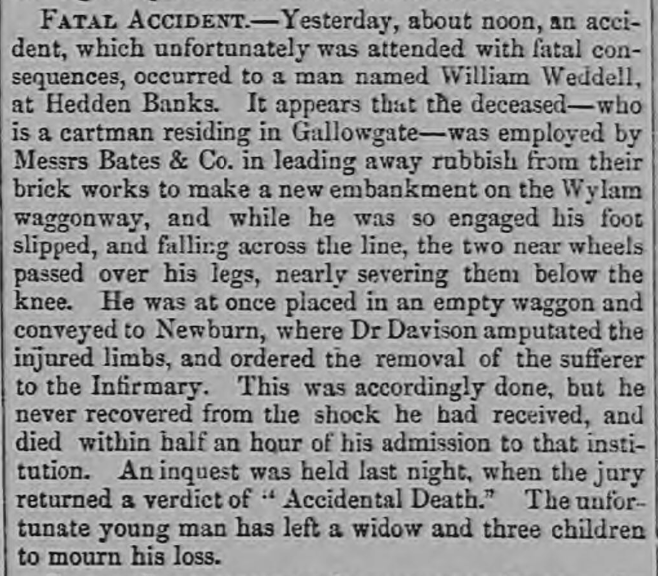
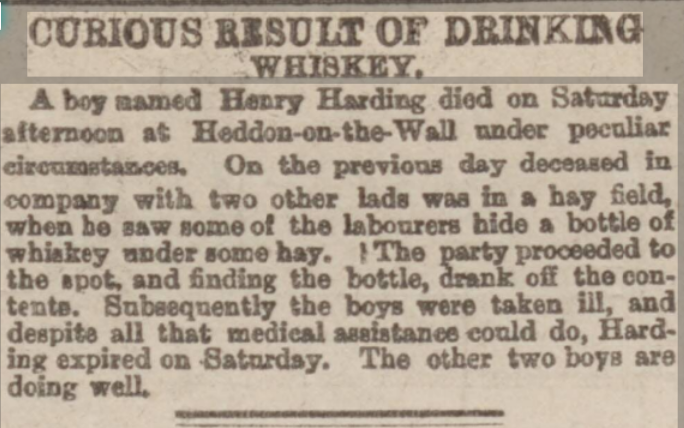
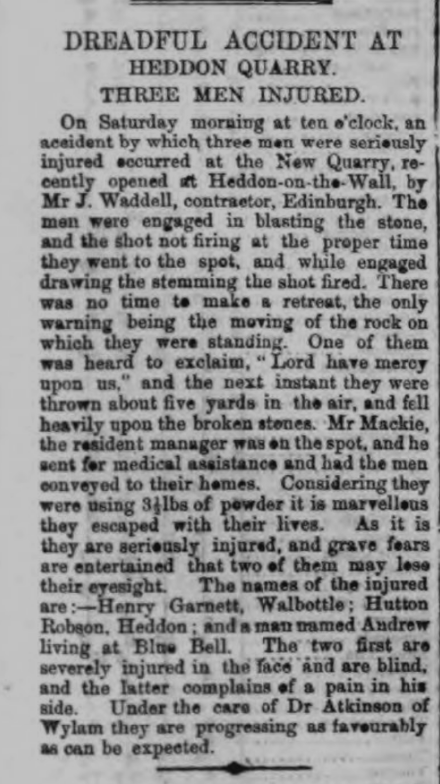
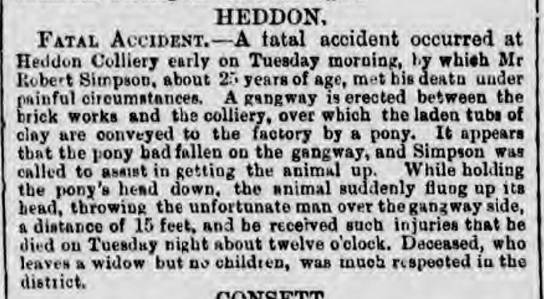
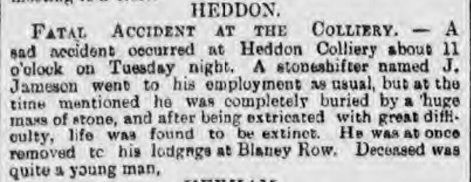


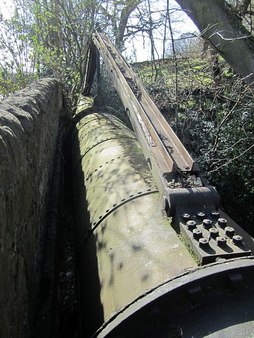
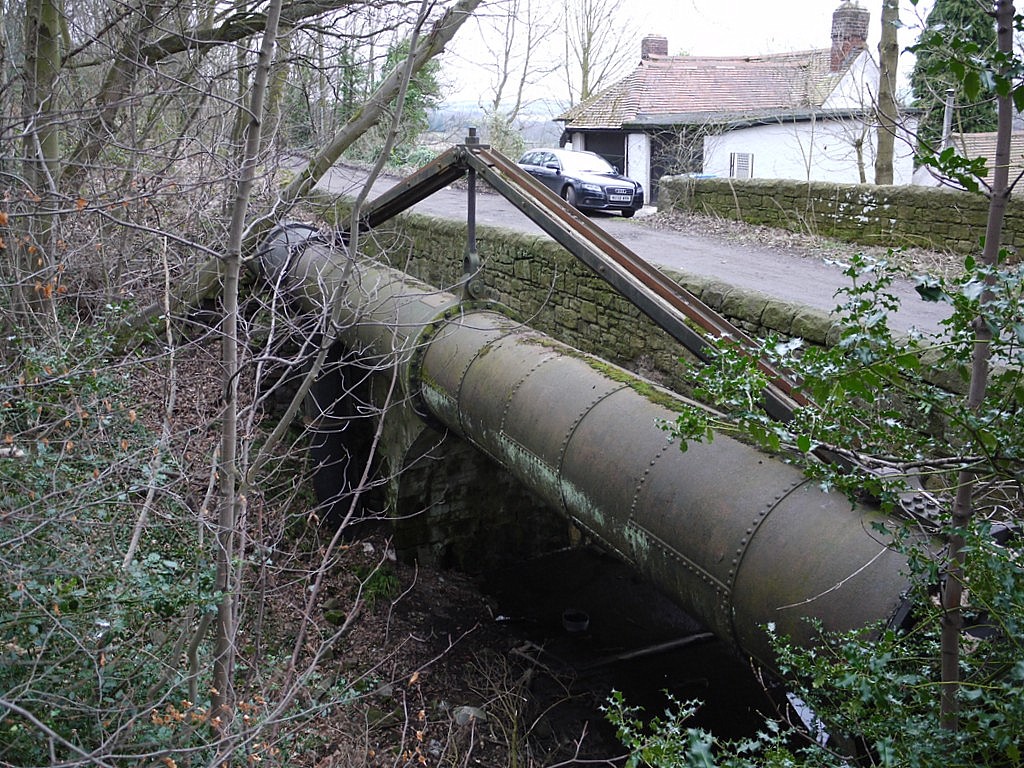
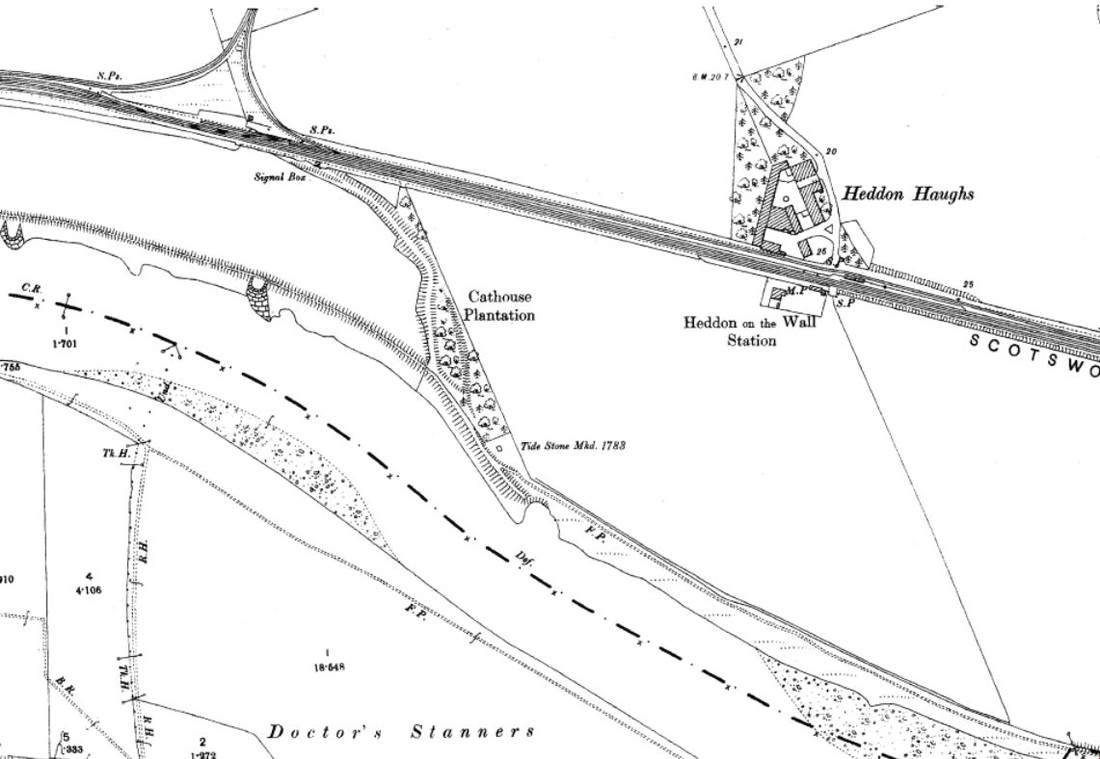
 RSS Feed
RSS Feed
